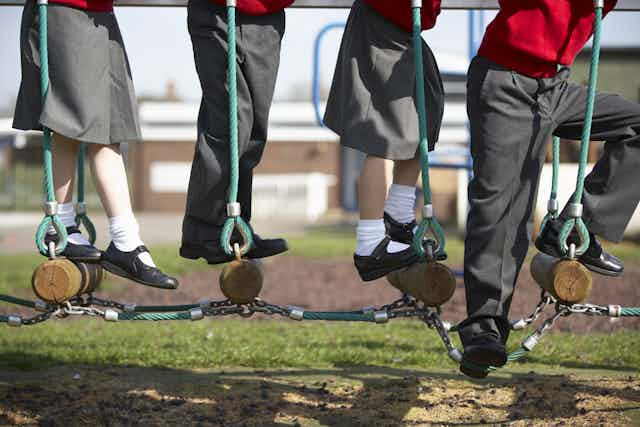Helping your child choose a new school is a daunting process. You have to take into account catchment areas, how your child will travel to school, and where their friends are going. You may be looking at Ofsted results, exam performance or even the universities that pupils from particular schools go to.
What’s more, there are different types of state school – and you might be wondering if your child would be better off at an academy or a locally controlled, council-run comprehensive school.
There are also a few free, grammar, secondary-modern, specialist, foundation, or university-led schools, which might play into your choice. This (needless) variety of schools applies particularly to the secondary age group in England, but the split between academies and locally controlled schools applies also to the primary sector.
Academy or council-run?
Locally run schools are able to work with the local authority and to cooperate between themselves to provide experts to deal with learning challenges or disability. Roaming teachers serve more than one school for rarer topics such as musical instrument tuition.
Academies, on the other hand, have meant different things across different government administrations.
When academies were first established in 2002 there were only meant to be a few of them. They were designed to be a way to turn failing schools around, through new buildings, new management, new curriculum, and standalone independence. They were answerable directly to central government and so were not part of their local authority. And they were given additional initial and recurrent funding.
Then existing schools, including private ones, were allowed to choose to become academies, even when not deemed to be failing. These were often not disadvantaged schools, and the reason for the scheme became confused. Then came several pushes to make all schools into academies, whether they wanted it or not.
The reason for all of these changes by a Conservative government may have been to remove more schools from Labour local authority control. Another reason given was that the independence of academies was a benefit.
But it was soon learned that schools cannot operate alone. Instead of moving them back to local authority control, the decision was made to group them in chains or academy trusts. There is no evidence that the often scattered schools in such chains are better off than they would have been as local cooperative communities.
Ofsted results
A recent report has suggested that schools in England classified as academies had somewhat worse Ofsted inspection grades than schools still controlled by their local authorities. Ofsted is the government-appointed body used to inspect and judge the quality of schools.
This might suggest that parents should look to choose local council-run schools ahead of academies. But a re-analysis of the same Ofsted data suggests that the difference between academies and locally controlled schools is much less clear-cut than in the initial report.

Either way, Ofsted grades are not trustworthy or reliable estimates of school quality. They are far too strongly influenced by the nature of the pupils attending each school.
On average, but only on average, schools find it more challenging to deal with pupils who have additional learning needs or a disability, are low-attaining, come from poor homes, have separated parents, live in state care or are otherwise heavily disadvantaged.
Ofsted does not seem to take these factors into account sufficiently. This means that good Ofsted scores are not fairly spread but are far more likely for suburban, girls-only, selective schools with no long-term poor pupils, for example. Perhaps 70% of the variation in Ofsted grades can be explained by these factors.
If Ofsted grades do not tell us whether academies or local schools are better, perhaps we should look at exam results. The same problem arises here. School exam outcomes are largely the result of their pupil intake.
Differences between pupils
Schools that take high-attaining pupils at age 11 get good exam results when those pupils are aged 16. Schools that take heavily disadvantaged pupils tend to get lower results. So the early academies based on the most disadvantaged schools in the country had lower-than-average results.
Once the disadvantage requirement was dropped, and private schools also became academies, the situation changed. Note that this did not mean that academies had improved educationally – merely that their pupil intake had changed.
The best estimates, taking prior attainment and all relevant school and pupil characteristics into account, suggest that there are no systematic differences between school types. There is no evidence that either academies or local schools produce better results with equivalent pupils.
As more and different kinds of schools became academies, they became less disadvantaged than many local schools. Now some areas with more academies, especially those that have more recently converted to become academies, take more advantaged pupils. This means that the intakes of council-run schools become more disadvantaged.
This kind of social segregation is undesirable for a national school system. It damages average attainment, pupil prospects, and social cohesion.
So there is no particular educational reason for a family to choose either type of school for their child. But the system would be improved at a stroke if only academies or only local schools existed. All in all, the evolution of the academy programme appears to have done more harm than good.

